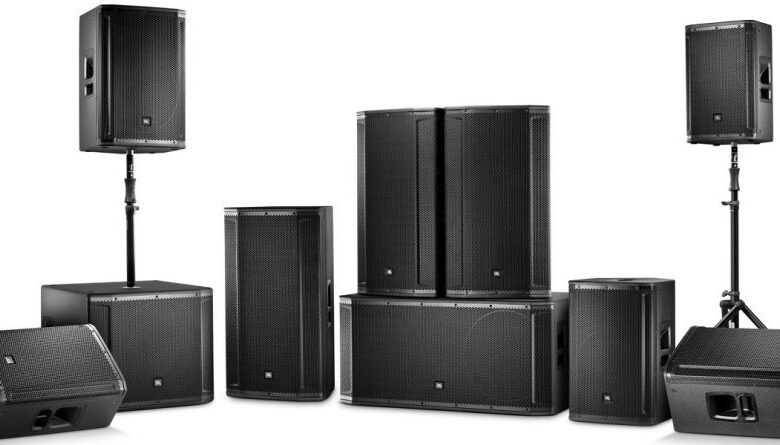Tips for Choosing the Right Sound Systems for Sale

Selecting the right sound system is crucial to delivering high-quality audio at any event, from conferences to concerts and everything in between. With so many sound systems for sale, it can be challenging to determine which one best suits your needs. Your choice of equipment impacts the quality and clarity of sound, which is key to creating an engaging experience. Whether you’re working in a new venue, upgrading an existing setup, or preparing for mobile use, finding a system that offers consistent performance and versatility is essential. Here are some helpful tips to guide you in choosing the perfect sound system for your next event.
1. Define Your Requirements
What type of events will you host most frequently, and how many attendees do you expect? For example, live music needs powerful speakers and subwoofers to handle the wide range of frequencies in instruments and vocals, while conferences require clear vocal projection without distortion. Smaller venues will need fewer speakers and lower wattage, while large halls or outdoor events demand more power and coverage. If you’re setting up for a permanent venue, you can consider stationary systems that offer higher power and customization, but if you travel often, portable systems are more suitable. Defining your requirements will help you identify the type of equipment that will best suit your setup.
2. Assess Speaker Types and Coverage
The type of speakers you choose will significantly impact your sound quality and coverage. Different speaker types have different applications. Full-range loudspeakers are designed to handle a broad range of frequencies, making them suitable for general audio playback. Subwoofers provide low-frequency reinforcement, enhancing bass impact, which is crucial for music events. Monitors provide focused sound for performers to hear their mix clearly. If you’re planning for larger spaces, complete PA system packages are ideal because they come with a combination of these speakers and deliver comprehensive coverage. For smaller venues or mobile setups, compact, portable speakers can provide the necessary output while remaining easy to transport and set up. Additionally, consider how the speakers can be placed or mounted to optimize their reach and prevent sound dead zones.
3. Understand Power Ratings
Power ratings, measured in watts, are crucial to understand as they determine how much volume and clarity your system can deliver. A system with too little power will struggle to deliver consistent audio levels and might distort at high volumes. A system with too much power could be wasteful or even damaging if used in a small venue. Smaller events or venues may require only 100 to 300 watts, while larger spaces like concert halls might need systems rated for 1,000 watts or more. Also, check whether the system uses RMS (Root Mean Square) or peak power ratings. RMS ratings provide a more accurate measure of continuous power output, whereas peak ratings show short bursts. Aim for a system that can deliver enough wattage to meet your event’s volume needs without risking audio quality or damaging equipment.
4. Consider Mixer and Signal Processing Needs
A mixer is the heart of your sound system, allowing you to control and blend audio inputs from different microphones and instruments. It’s crucial to choose a mixer that provides enough input channels for your needs. For example, live music often requires many inputs for different instruments, while a corporate event may only need a handful of microphone channels. Analog mixers are user-friendly and intuitive but have fewer built-in effects. Digital mixers offer extensive features, including EQs, compression, and reverb, and the ability to save and recall presets. Signal processing features are essential for shaping the sound, reducing feedback, and adding effects. Make sure your mixer supports these features to enhance your system’s flexibility.
5. Portability and Setup Time
Portability is essential for anyone constantly on the move or working in multiple venues. Portable systems should be easy to set up and tear down, allowing for quick transitions between events. Self-powered speakers are a convenient option as they integrate amplifiers within the speaker enclosure, reducing the number of external components needed. Modular systems that connect via quick-lock cables further simplify the setup process. Lightweight frames, foldable stands, and compact mixers reduce the overall system size. Additionally, well-organized cables and carrying cases help transport equipment safely without tangling or damage.
6. Check Compatibility and Connectivity
Ensure your sound system is compatible with your existing gear and has versatile connectivity options. Different devices use different connectors, including XLR, TRS, RCA, and Speakon. A sound system should accommodate all these connectors to accept microphones, instruments, and media players seamlessly. Additionally, many modern systems come with wireless connectivity via Bluetooth or Wi-Fi, making it easier to control the sound from a distance. Wireless microphones are especially useful for presenters who need to move freely. Test the connectivity options before purchasing to ensure smooth integration.
7. Consider Second-Hand Systems
Second-hand PA systems for sale often offer excellent value, providing high-quality audio equipment at a fraction of the cost of new gear. This is ideal for those on a tight budget or who need backup systems. However, it’s important to inspect second-hand systems carefully to identify potential wear and performance issues. Test each component thoroughly to ensure it functions properly, and inquire about any repairs or replacements made to the system. Some second-hand dealers offer limited warranties to provide peace of mind. By checking performance and verifying compatibility with your existing setup, you can find great deals on second-hand systems.
Conclusion
Whether you’re looking for individual equipment speakers or complete PA system packages, understanding these tips ensures you can make an informed purchase. The right sound system will offer powerful, clear audio for any venue while being easy to set up and operate. GearSource provides a selection of sound systems for sale, including second-hand PA systems for sale, to help you find a reliable solution that fits your budget. With their expertise and inventory, you’ll find a sound system that meets your venue’s unique needs, delivering professional-quality audio that leaves a lasting impression on your audience.




